We may receive a commission when you use our affiliate links. However, this does not impact our recommendations.
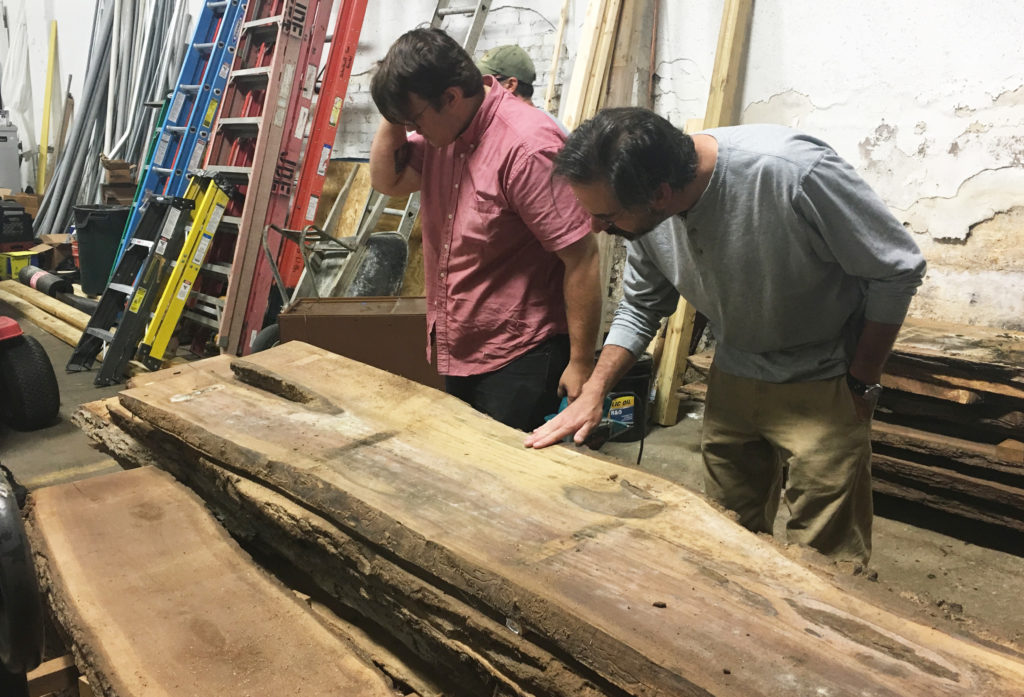
Rough lumber can be hard to judge. Christopher Schwarz (right) and I looked over a piece of persimmon to gauge the viability of the spalting and condition of the wood. Getting a look at both sides and having a knife or plane to probe the wood helps you avoid punky wood or hidden knots.
I often feel like sourcing wood takes on two dissonant aspects. It can be an annoyance when I can’t find the board I’m looking for, and everything is checked, warped or has too much runout. On the other hand, I go out of my way on every vacation to visit lumberyards to see what treasures another part of the country or world possesses, and to take a chance on the lumber lottery.
One of the most polarizing sources for lumber, in my experience, is sawyers and tree services. I’ve bought wood off of sawyers a number of times. Once, I got some one-of-a-kind Japanese elm that worked beautifully and didn’t warp, cup or check in the least. Another time, I got 100 board feet of sopping-wet soft maple that I was told had been air-drying for years, most of which went to the bin or bonfire.
The arborist and sawyer pair, not uncommon bedfellows and sometimes one and the same person, presents a gamble. They have access to large, often unique tree species and, without the inclusion of middlemen, ask a very fair price for their wares. The downside can be a lack of expertise in drying techniques, a possibility of bugs or rot (as the trees taken down are often standing dead, at least in part) and sometimes a waiting game. Many arborists like to sell the wood fresh off of the mill, then leave it to the customer to dry the lumber themselves.
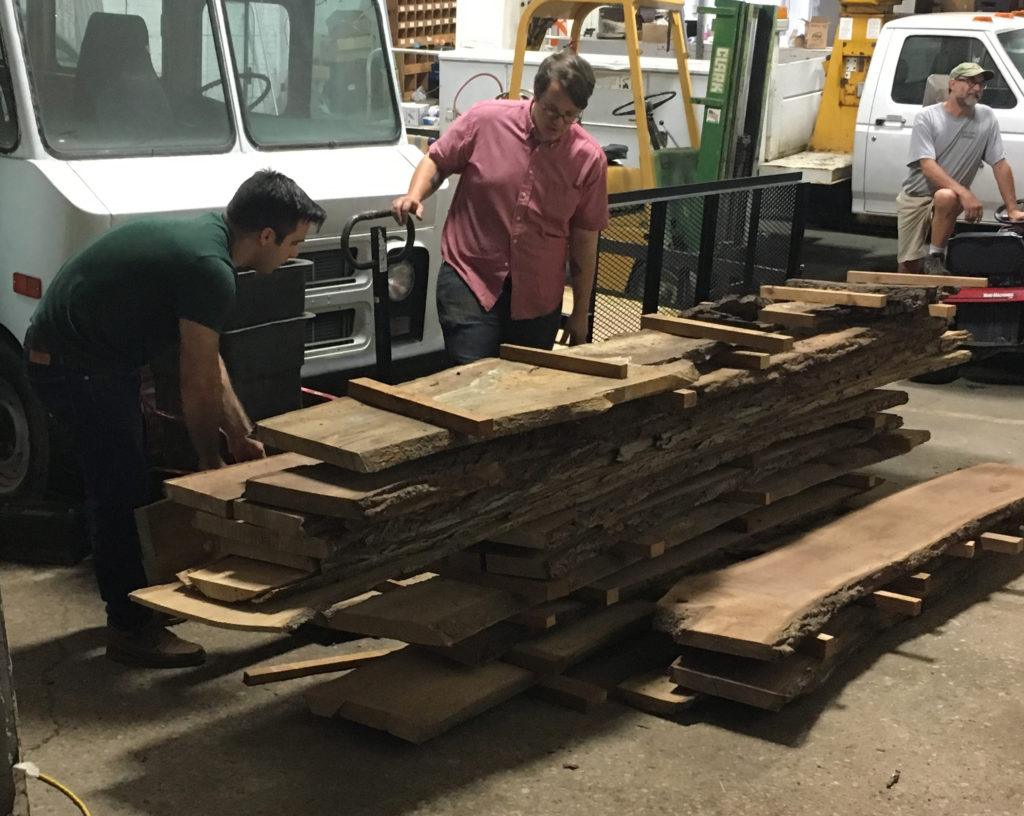
Most of this stack David Lyell and I dug through is walnut, but, as my Dad said, “Wir wollen die Fremdescheiße kaufen.” We’re looking to buy the unique stuff.
These boards do have a story, though. They’re harvested locally, and because you meet the person who felled the tree, you’ll know more about your wood than most. You can ask if it grew on a hillside, which might spell tension in the wood. You can learn if it was standing dead, which might indicate bugs or interesting spalting. Asking questions about the tree will build your knowledge of the boards before you can even cut into them. You’ll build a closer bond with the wood – and that will never have a negative impact on the work.
So, I never turn down a trip to see some flitch-cut lumber. This morning, Christopher Schwarz tipped us off to a meeting he had with a local tree service. A motivating factor for me was the rumor of some persimmon in the stacks, a wood I’ve been interested in working with more after getting a taste for it from some of Tim Manney‘s offcuts. The tree, Diospyros virginiana, is North America’s only species of ebony and has a mottled, greyish look and beautifully fine texture that is well-suited to my Krenovian motivations.
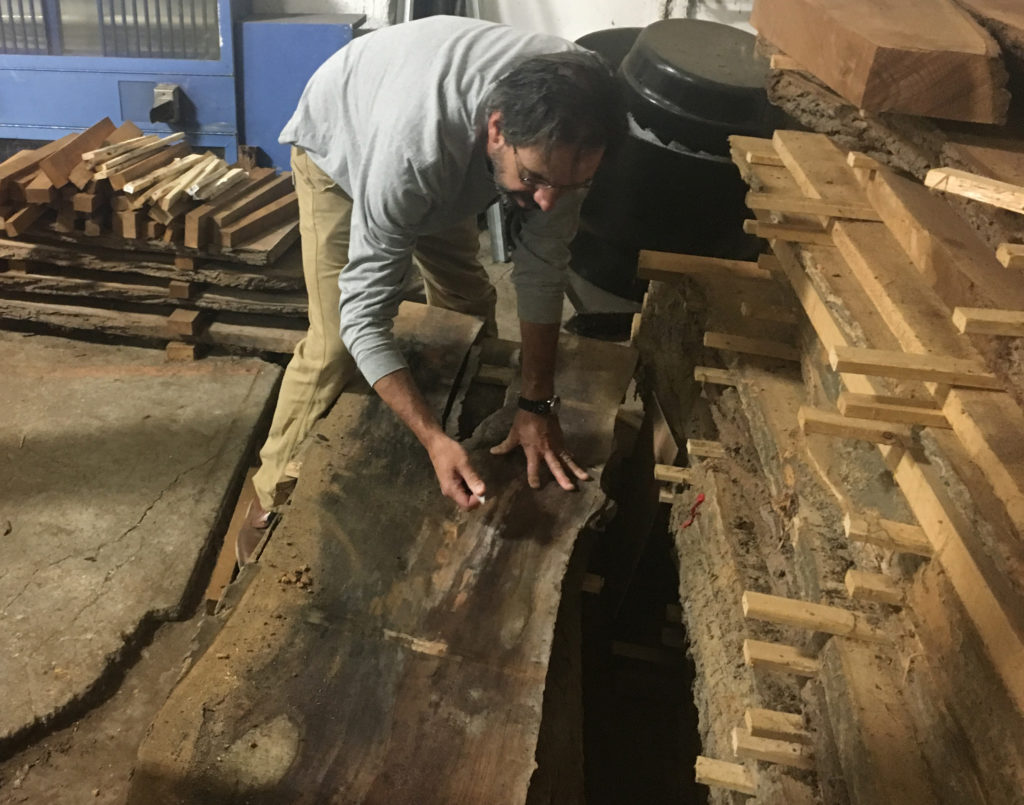
Digging through the stacks, we found our persimmon. It was covered in mold and detritus (it didn’t have the best spot to dry) but some scraping and planing revealed some beautiful wood under the junk.
Tucked in the back of the sawyer’s out-of-the-way warehouse were four stacks of thick, flitch-cut slabs. Chris had his eye on some gorgeous hickory, David Lyell wanted some red oak for a set of tables, and I wanted that persimmon. After a fair amount of digging and re-stacking, we all found a board or two to our liking.
I look for three things when digging through piles of wood. First, I consider the grain and figure to judge straightness, the likelihood of cupping or warping, and runout. Second, I try to look through the rough milling marks to see defects, knots, spalting or any other defining characteristics that would impact the kind of parts I can harvest from the slab. Third, I look at the context – if I like one board, I’ll look for its sibling (the board that was sawn above or below). Often, a sister slab can reveal tendencies in the wood, highlight defects that might be hard to see in the first board, or might get you a dramatic full-thickness bookmatch.
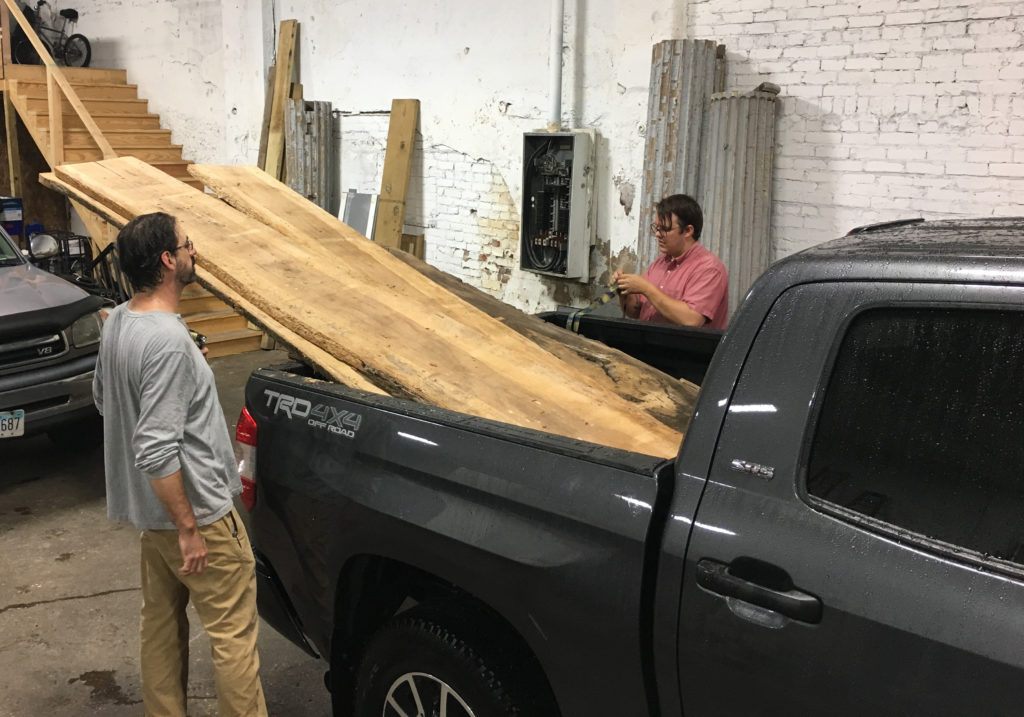
As usual, buying large slabs from a sawyer involves some heavy lifting. A big truck helped, but some creative work with ratchet straps got it home.
The next hitch to tackle is getting it to the workshop. Luckily, Chris brought a big truck (my little Tacoma would probably be doing wheelies with this much wood sticking out the back), plus some rachet straps to hold things securely.
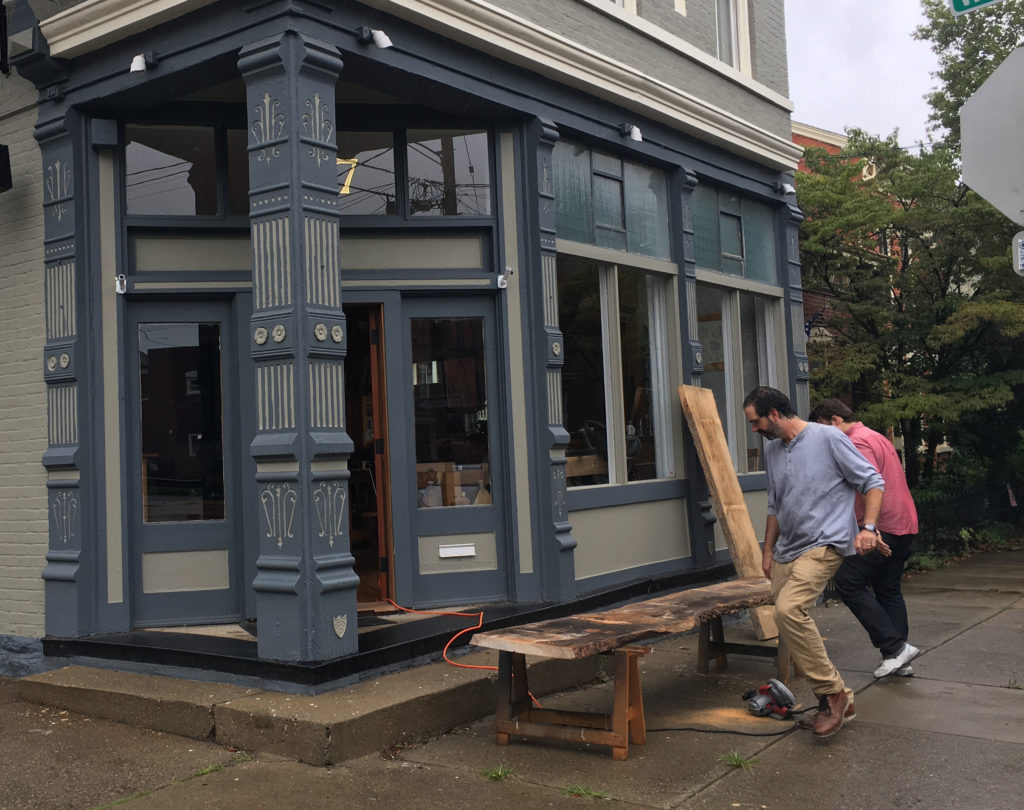
For my persimmon slab, and David’s oak, we crosscut the 12′ boards into something a bit more portable. I work alone in the shop, mostly, so I rarely work with anything longer than 6′. A circular saw and sawhorses make quick work of the crosscut, though when I’m on my own, I’ll make the cut right at the sawyer’s place with a hand saw.
The next step, at least in my case, was to break the slab down into more manageable dimensions. I rarely work (or play well) with others, so I’ll saw my lumber down into the 6′ range. At those dimensions, it fits in my truck easily and I can move it around the shop myself. Sometimes, if I’m picking up wood myself, I’ll break down the wood at the yard with a circular saw or a hand saw.
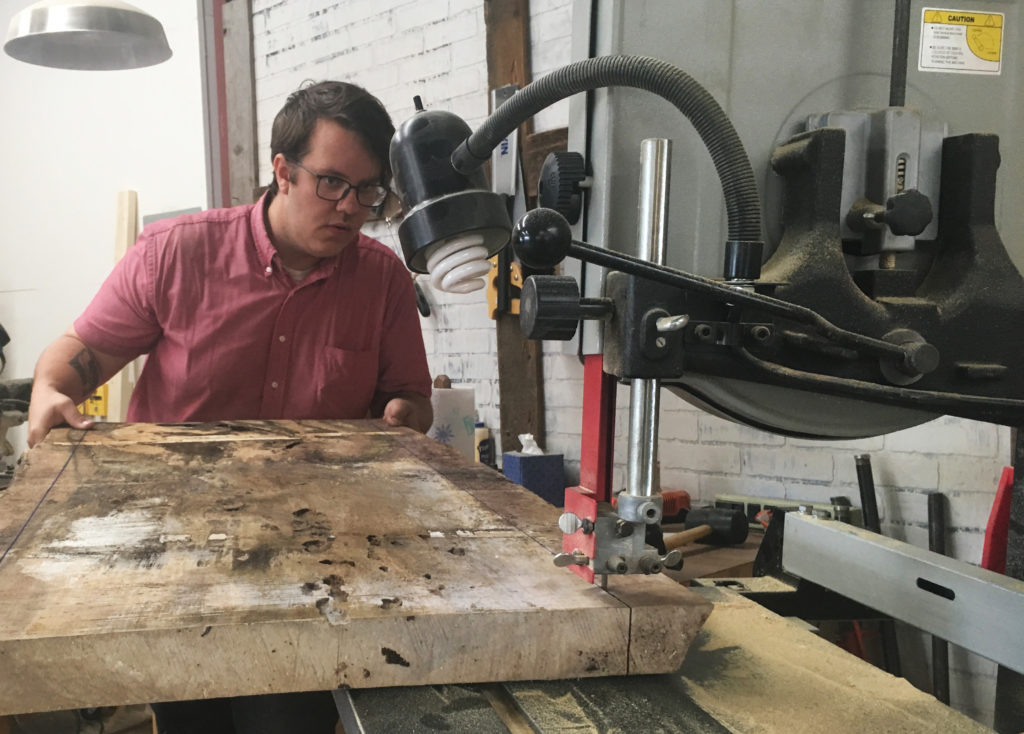
The board was only barely wider than the 20″-wide PopWood planer – a quick rip down the edges got it to a workable width and got rid of the live edge, which I’m not going to use for this piece. That dopey look on my face shows you I’m focused – when I’m band sawing large slabs like this, I’m watching the line carefully, but also being careful to balance the board on the table, without racking the blade or letting the piece fall off.
The persimmon I brought back had a few gnarly spots – I chose a large void about a third up from one end as the place to crosscut my slab. This left me a large, mostly defect-free board, and a smaller board with defects but plenty of wood to play with. The smaller board also makes a good feeler board – that is, a board to send through the planer first to judge the quality and condition of the wood.
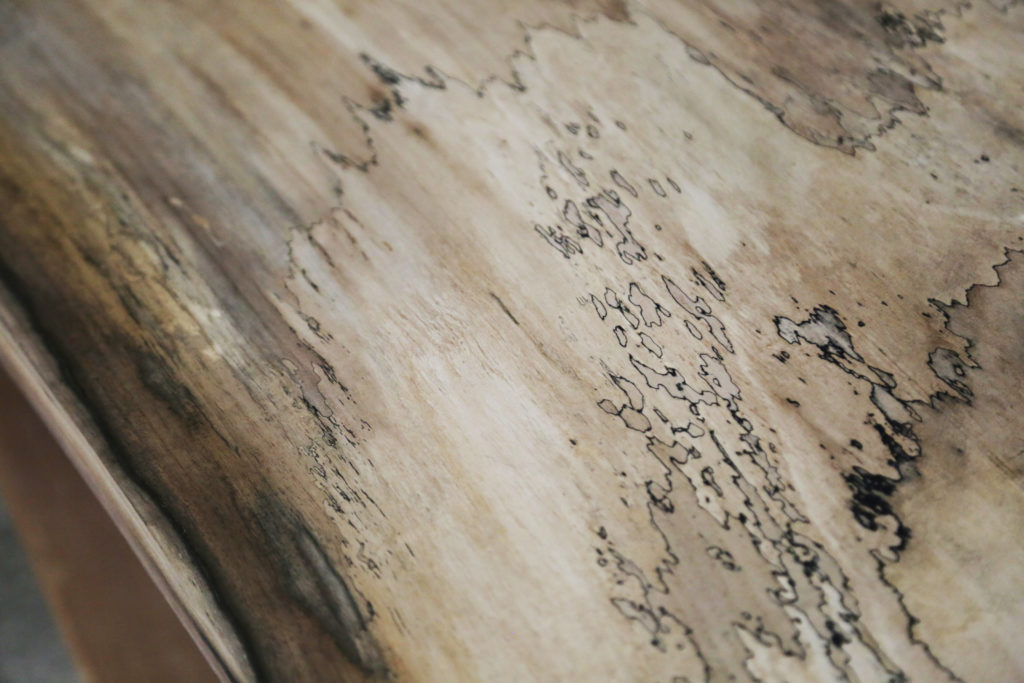
Some of this is spalting, but also some of the gray mottling is common in persimmon.
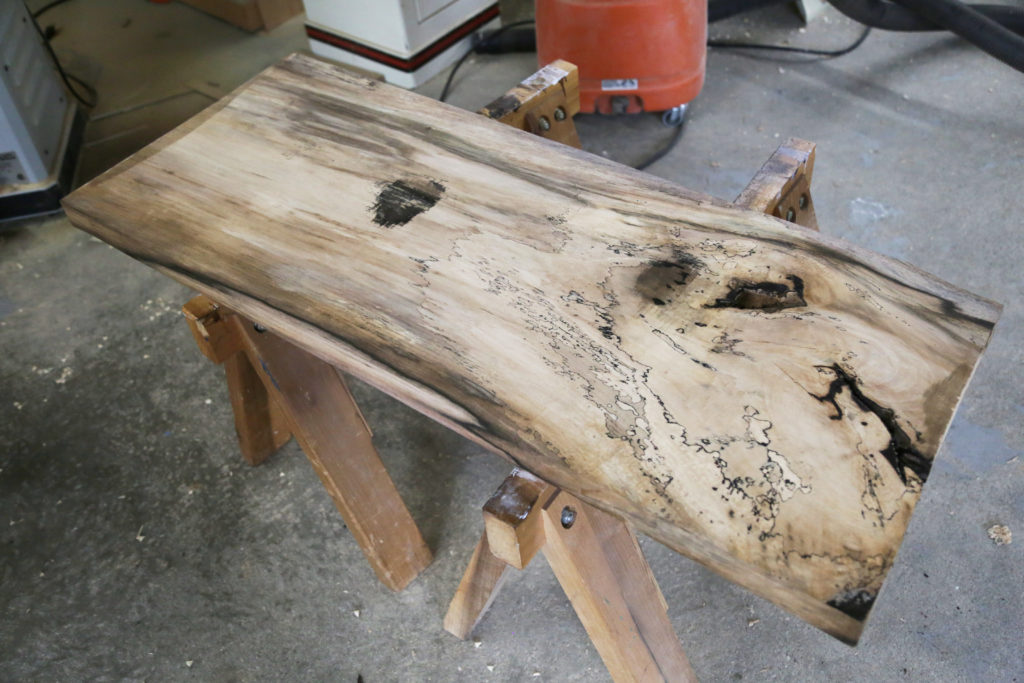
This is the short end of the slab, which I’ll only use for a few small things. It shows a lot of promise – it’s loud, but if used correctly, it’ll make a dashing panel or door for a cabinet, or a dramatic box or cabinet carcase. That dark spot in the upper middle of the board is a low spot that I didn’t plane away, and shows the difference in color between the board’s rough outside and creamy inside.
And look what I found! This is just the short board – only some of the wood is usable because some wild runout and voids make some of it kindling. The wood in good condition is spectacular, however, and the larger board has much more of this usable lumber. A dirty slab sometimes hides the most beautiful wood – diamonds in the rough, if you will. The persimmon is also really solid and dense, even where it looks like it might’ve been punky. It behaves like the ebony it is, and takes a high luster with smooth planing or polishing.
I wasn’t the only one successful on the run, either. Chris got two huge 14′ hickory boards, with stunning heartwood coloration, and David got a beautiful red oak slab, which will be a set of tables for his new house. Just like on my board, we found a large knot toward the middle of the board, and made the crosscut there.
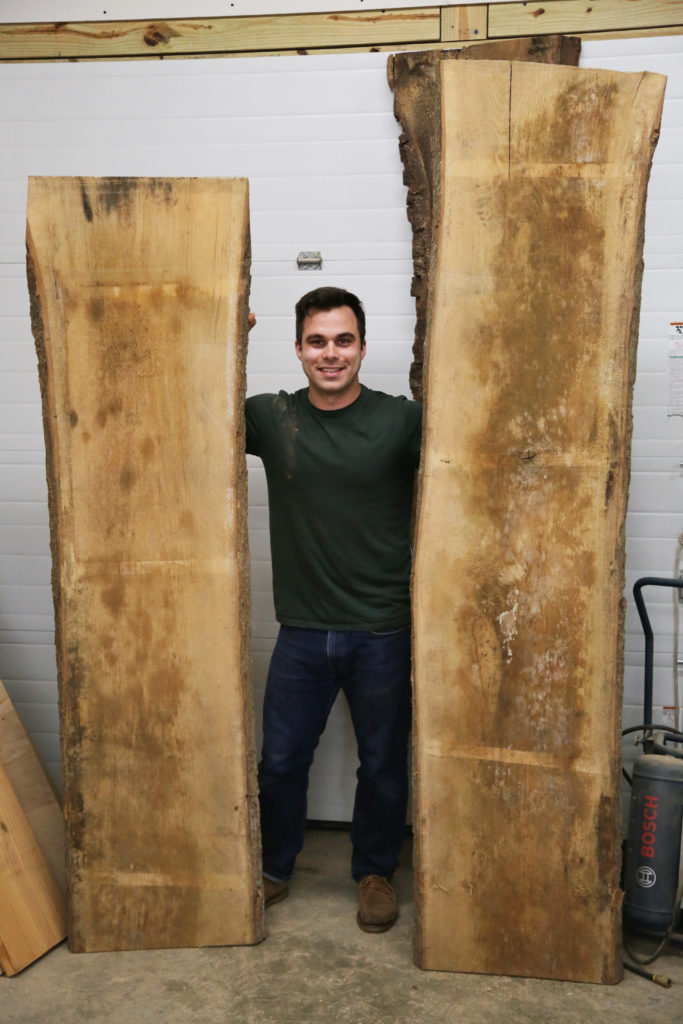
David was worrying about what wood to use for his tables – not any more!
So, the lesson today is to take the gamble – both on rough looking wood, and on sawyers and tree services. You can stack the odds in your favor with experience and diligence by carefully inspecting what you’re buying and getting as much background as possible on the lumber. A little care and pause go a long way, and you might just end up with the “perfect” board, with a story, for a good price.
Here are some supplies and tools we find essential in our everyday work around the shop. We may receive a commission from sales referred by our links; however, we have carefully selected these products for their usefulness and quality.






![Working With Live-Edge Tops [Video]](http://www.popularwoodworking.com/wp-content/uploads/bfi_thumb/dummy-transparent-olcy6s63it1p9yp7uhusjas7c8kahafrhg9su7q9i0.png)


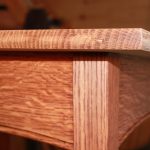
Instead of balancing the wide board on the bandsaw, why not put a roller stand by the side of the saw adjacent to the band location to support the edge of the board hanging over the table?